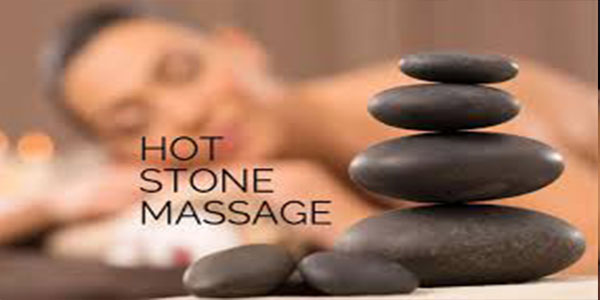
Of course. Let’s dive into the wonderful world of Hot Stone Massage.
A Hot Stone Massage is a specialized therapeutic massage technique that uses smooth, heated basalt stones placed on specific points of the body and used as an extension of the therapist’s hands.
Here’s a comprehensive breakdown of everything you need to know.
What is a Hot Stone Massage?
It’s a type of massage therapy that combines the benefits of traditional massage with the deep, soothing heat from stones. The heat penetrates deep into the muscles, allowing the therapist to work more effectively on areas of tension with less pressure.
The Stones Themselves
- Type: They are typically basalt stones, a dark volcanic rock that retains heat exceptionally well due to its high iron content.
- Shape & Smoothness: The stones are river rocks, meaning they are naturally smooth and polished by water over time. They come in various sizes and shapes for different parts of the body (e.g., large, flat stones for the back, smaller ones for between the toes, and oblong ones for the palms).
- Temperature: The stones are heated in a specialized water heater to a precise temperature, usually between 120°F and 130°F (49°C – 54°C). A professional therapist will always test the temperature on their own skin before applying them to a client.
How Does a Session Work?
A typical 60- or 90-minute session generally follows this structure:
- Consultation: You’ll discuss any areas of concern, injuries, or medical conditions with your therapist.
- Preparation: You will be left alone in the room to disrobe to your level of comfort and lie on the massage table under a sheet or blanket. The therapist will use draping techniques to only uncover the area they are working on.
- Placement of Stones: The therapist will often begin by placing warm stones on specific “energy points” or acupressure points along your spine, in your palms, on your stomach, or between your toes. This helps to warm and relax the entire body.
- The Massage: Using a combination of techniques:
- The therapist will hold stones in their hands to apply gliding, long strokes (effleurage).
- They may place stones on the body and leave them there while they work on another area.
- They will often alternate between using stones and their hands, sometimes using cold stones for a contrasting effect on inflamed areas.
- Conclusion: The session ends gently. The therapist will remove all stones, help you slowly get up (you may feel extremely relaxed and sleepy), and leave the room for you to get dressed.
Key Benefits
The combination of heat and massage offers a powerful set of benefits:
- Deep Muscle Relaxation: Heat dilates blood vessels, increasing blood flow and oxygen to tight muscles. This allows knots and tension to release more easily than with traditional massage alone.
- Pain Relief: Highly effective for chronic pain conditions like arthritis, fibromyalgia, and general back pain.
- Reduced Stress and Anxiety: The profound warmth and rhythmic massage induce a deep state of relaxation, calming the nervous system.
- Improved Sleep: The deep relaxation effect can significantly improve the quality of sleep.
- Enhanced Circulation: The heat promotes better blood flow throughout the body.
- Toxin Release: The improved circulation and lymphatic drainage can help flush metabolic waste from the body’s tissues.
What Does It Feel Like?
Most people describe the sensation as deeply comforting, grounding, and intensely relaxing. The heat is never uncomfortably hot; it should feel like a warm, heavy blanket melting away tension. The weight of the stones provides a gentle, grounding pressure that many find very calming.
Who is it Good For?
It’s excellent for almost anyone, but especially for:
- People with chronic muscle tension or pain.
- Those experiencing high levels of stress or anxiety.
- Individuals with poor circulation.
- Anyone looking for a deeply relaxing and pampering experience.
Important Contraindications & Who Should Avoid It
Hot stone massage is not recommended for everyone. You must inform your therapist of any medical conditions. It is generally avoided if you have:
- High blood pressure or heart disease
- Diabetes or neuropathy (reduced sensation)
- Varicose veins
- Skin conditions like eczema, psoriasis, or open wounds
- Recent surgery or injury
- A fever or illness
- Pregnancy (Many therapists are certified in prenatal hot stone massage, but you must always get clearance from your doctor first and find a specially trained therapist).
What to Do After Your Massage
- Drink plenty of water to help flush out released toxins.
- Avoid strenuous activity for the rest of the day.
- Enjoy the feeling of deep relaxation!
FAQ
Q: Does it hurt?
A: No, it should not hurt. The heat should be pleasantly warm, not burning. The pressure can be adjusted to your preference, just like any massage.
Q: How is it different from a Swedish or deep tissue massage?
A: The primary difference is the use of heat. The heat allows the therapist to achieve a deeper level of muscle relaxation often with less pressure, making it feel less intense than a traditional deep tissue massage but with similar results.
Q: Are the stones reused?
A: Yes, but they are thoroughly sanitized between each client. The stones are washed, scrubbed, and sterilized in the heating unit, which is essentially a water sanitizer.
In summary, a hot stone massage is a luxurious, therapeutic, and deeply relaxing treatment that uses heat to enhance the healing benefits of massage. It’s a fantastic choice for melting away stress and chronic muscle tension. Always ensure you go to a licensed and certified massage therapist who is trained in this specific modality.
